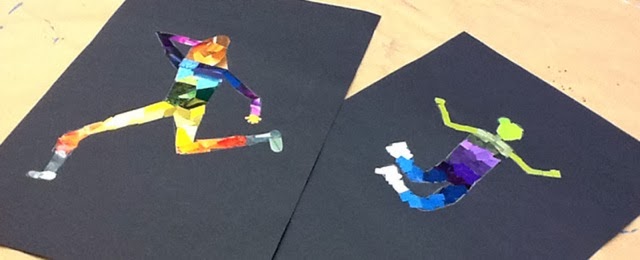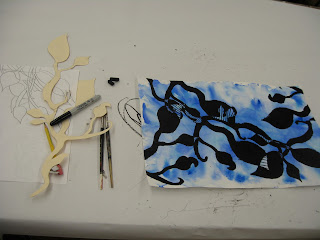I am yet to have posted anything besides some of my lesson plans. I am generally not a complainer, I make the most of the resources and opportunities given to me. However, I had a moment this past week while trying to develop a new lesson for my fifth graders that really put the sourest taste in my mouth.
I am working on a Seurat inspired lesson. I thought a video of some sort would be really effective for this lesson so that the students could view Seurat's process of building up colored layers of dots and brushstrokes... a la Ferris Bueller's Day Off when they are in the museum and the camera continues to zoom in closer and closer to Sunday Afternoon on La Grande Jatte as Cameron stares into it.
I found a Seurat-focused VHS at the public library but had to wait until I had a chance at school to use a VCR to view it, since I do not have a vcr at home. Duh. why would I have a VCR at home? I don't even think its compatible with my tv.
Anyway.... I had to use the library tv an hour before school just so I could watch it to find an appropriate part. The picture quality was so poor I couldn't even figure out what I was looking at. And there I stood with a revelation, not the first time I've had this frustration but more severe this time.
Why do most people have these fancy fancy tv's with the clearest picture quality and blue ray players so that they can watch big movies and sporting events- making sure the picture is clear enough that they can make out the faces of the fans at the game but meanwhile their kids are at school trying to watch something for educational purposes and viewing it on the oldest tv in town and waiting for a VCR tape to rewind or fast forward??.... and to boot - I'm trying to show details of Seurat's paintings- the tiniest most complicated combination of brushstrokes and we can barely see through the fuzz of the tv!!!!
I just don't understand this.
I realize some of you educators out there have access to good technology. And I am really glad that it does exist in some education settings, but it should exist in all of them!
I used to bring my laptop from home in to school just so I could try to do a quick slideshow with my students, but my laptop had been dropped one too many times and the battery is shot, that ended that. I should be able to hook up a projector whenever I want and not have to factor in an hour of set up time before my class. I should be able to model for my kids how you can view YouTube videos of painters and modern artists creating
large scale installations or how traditional Molas are made or how Kente cloth is worn or
woven, but that is not possible in my school. And it saddens me....
My students are mostly of low income socioeconomic backgrounds. They do not have access to technology at home (most of my students main use of technology is for video games), they need to learn technology skills so that they can perform strongly as they move on to high school and college and be strong candidates as they apply for jobs in the future.
So for those of you with access to good technology- USE IT!
Art educators can incorporate technology into their classroom routines in as meaningful a way as we incorporate exploration of materials! Encourage students to make art and the viewing and exploring of art a part of their daily life!




















































